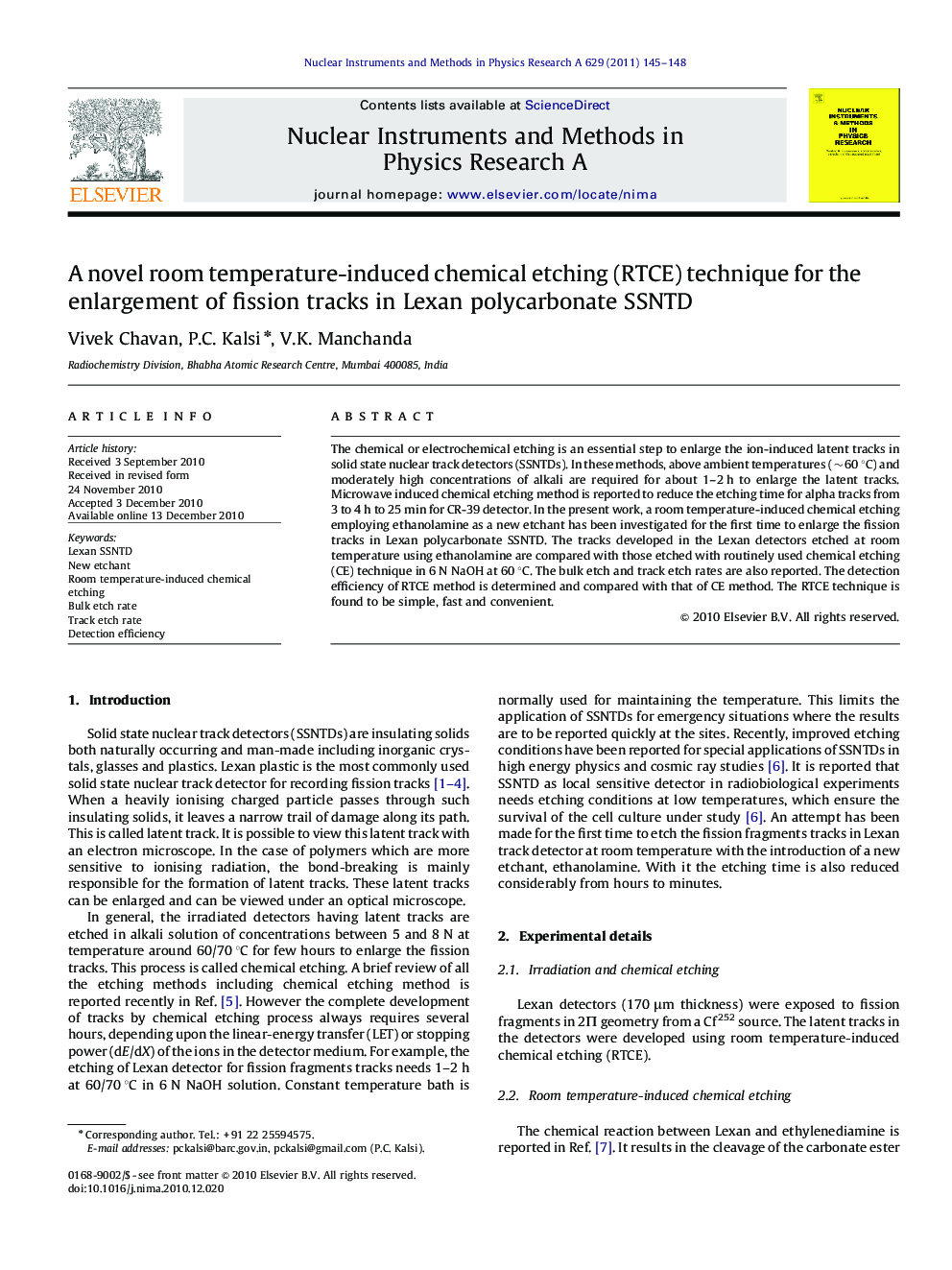| Article ID | Journal | Published Year | Pages | File Type |
|---|---|---|---|---|
| 1826515 | Nuclear Instruments and Methods in Physics Research Section A: Accelerators, Spectrometers, Detectors and Associated Equipment | 2011 | 4 Pages |
The chemical or electrochemical etching is an essential step to enlarge the ion-induced latent tracks in solid state nuclear track detectors (SSNTDs). In these methods, above ambient temperatures (∼60 °C) and moderately high concentrations of alkali are required for about 1–2 h to enlarge the latent tracks. Microwave induced chemical etching method is reported to reduce the etching time for alpha tracks from 3 to 4 h to 25 min for CR-39 detector. In the present work, a room temperature-induced chemical etching employing ethanolamine as a new etchant has been investigated for the first time to enlarge the fission tracks in Lexan polycarbonate SSNTD. The tracks developed in the Lexan detectors etched at room temperature using ethanolamine are compared with those etched with routinely used chemical etching (CE) technique in 6 N NaOH at 60 °C. The bulk etch and track etch rates are also reported. The detection efficiency of RTCE method is determined and compared with that of CE method. The RTCE technique is found to be simple, fast and convenient.
